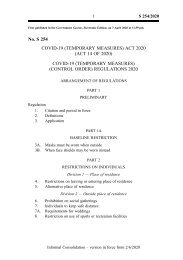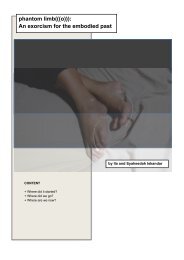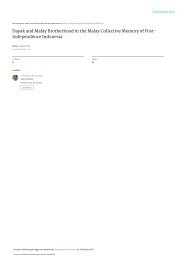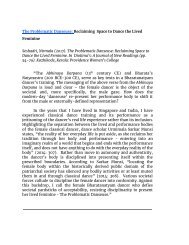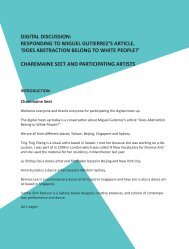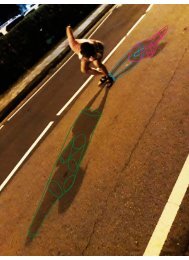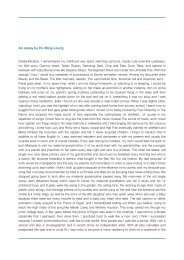FUSE#5
This edition of FUSE consists of articles contributed by artists who participated in Dance Nucleus' programmes in 2020.
This edition of FUSE consists of articles contributed by artists who participated in Dance Nucleus' programmes in 2020.
You also want an ePaper? Increase the reach of your titles
YUMPU automatically turns print PDFs into web optimized ePapers that Google loves.
FUSE #5<br />
daughters in the dance classes. For many of us, there was no choice in<br />
the matter. By the age of 6, we began our journeys as carriers of this<br />
culture. The dance form has suitably satisfied the “diasporic demand<br />
for cultural symbols” (O’Shea 2007: 55) and continues to do so even<br />
today. Anthropologist Sitara Thobani highlights: “It is in the transnational<br />
context that essentialized constructions of India are further<br />
cemented, leading to the strengthening of ideas regarding coherence,<br />
uniformity and impermeability of Indian culture” (2017: 105). In more<br />
recent years, with neo-liberalism and the rising presence of the transnational<br />
elites in Singapore, who come here with a much stronger<br />
connection to India, India’s presence is felt more strongly. With the<br />
shifting political landscape, there appears to be a growing partnership<br />
between India and the diaspora in heightening the projection of<br />
Indianness and Hinduness globally.<br />
Conclusion<br />
Despite its advent as an ‘invented tradition’ 24 , Bharatanatyam appears<br />
now to be locked into a continuing nationalist project. I agree<br />
with choreographer Shobana Jeyasingh who says, “It is one thing<br />
to say that it has roots that go back two thousand years and quite<br />
another to say it hasn’t changed over that period of time” (1993: 7).<br />
Scholar Kapila Vatsyayan acknowledges that Bharatanatyam deals<br />
with modernity as well as with “fragments of antiquity” (1992: 8).<br />
Understanding Bharatanatyam as an invented tradition should offer<br />
hope of its potential for reinvention. However my observations and<br />
experiences in the field, as I have discussed, foreground hegemonic<br />
structures in Bharatanatyam that restrict its scope to nationalist,<br />
colonialist and various other agendas specific to each space in which<br />
it exists.<br />
I introduce the notion of the Problematic Danseuse, who rejects<br />
the prescriptive framework of Bharatanatyam that is governed by<br />
rules of purity and appropriateness, choosing instead to explore autonomy<br />
and authenticity through the portrayal of her lived feminine. I<br />
suggest that the danseuse who contradicts the status quo, especially<br />
with regard to the portrayal of eroticism, is treated with contempt<br />
and tends to be frozen out. However I also highlight that this act<br />
of erasing the Problematic Danseuse who does not fit conveniently<br />
into the mainstream agenda is after all, embedded in the history and<br />
emergence of the transfigured Bharatanatyam. I propose that creators<br />
of alternative works in Bharatanatyam acknowledge that they<br />
occupy a different space, thus presenting their work in settings that<br />
121




